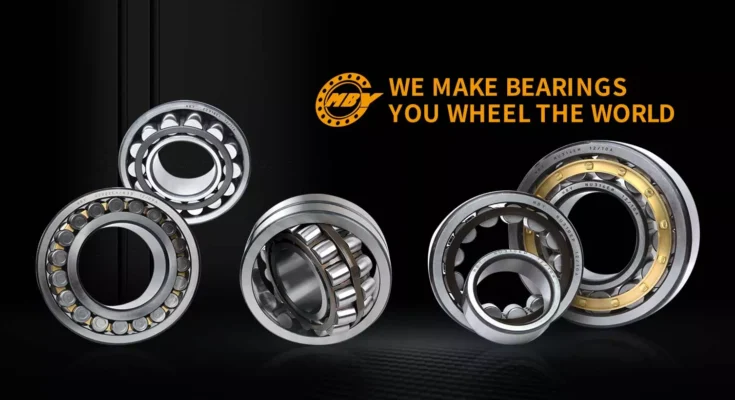Exploring the 8 Common Questions About Needle Roller Bearings
Needle roller bearings are an essential component in various industrial applications, offering high load-carrying capacity and compact design. These bearings consist of cylindrical rollers, much smaller in diameter than traditional roller bearings, making them particularly suitable for applications with limited space and high radial load requirements. Despite their widespread use, many people still have questions about these critical mechanical components. In this article, we will explore 8 Common Questions About Needle Roller Bearings to provide a better understanding of their function, advantages, and applications.
What are needle roller bearings, and how do they work?
Needle roller bearings are precision-engineered mechanical devices used to reduce friction and support radial loads in rotating or oscillating machinery. They have slender cylindrical rollers with a length-to-diameter ratio typically greater than four, which enables them to handle high radial loads while maintaining a compact design. The rolling elements are guided by a cage that keeps them evenly spaced and prevents contact, reducing friction and wear. This design allows needle roller bearings to offer high load-carrying capacity and operate efficiently even in restricted spaces.
What are the advantages of using needle roller bearings?
Needle roller bearings offer several advantages over other types of bearings:
- A. High load-carrying capacity: The longer and thinner rollers distribute the load more evenly, enabling them to handle higher radial loads than traditional ball bearings.
- B. Compact design: Due to their small size and high load capacity, needle roller bearings are ideal for applications with limited radial space.
- C. Low friction: The rolling elements’ point contact with the raceways results in lower friction, leading to reduced energy consumption and improved efficiency.
- D. High stiffness: Needle roller bearings provide higher stiffness due to their longer and thinner rollers, ensuring better support for rotating components.
- E. Cost-effectiveness: Despite their advanced features, needle roller bearings are often cost-effective solutions for many applications.
What are the typical applications of needle roller bearings?
Needle roller bearings find applications in various industries and machines, such as:
- A. Automotive industry: They are used in transmissions, engine components, and suspension systems.
- B. Industrial machinery: Commonly found in textile machinery, printing presses, and packaging equipment.
- C. Power transmission: Used in gearboxes, differentials, and belt tensioners.
- D. Aerospace: Found in various aircraft components, including landing gear and engines.
- E. Agricultural machinery: Employed in tillers, tractors, and harvesting equipment.
How do you select the right needle roller bearing for a specific application?
Selecting the appropriate needle roller bearing requires considering several factors:
- A. Load requirements: Determine the magnitude and direction of the radial and axial loads the bearing will experience.
- B. Speed and temperature: Consider the operating speed and temperature range to ensure the bearing can withstand the conditions.
- C. Size constraints: Measure the available space to choose a bearing with suitable dimensions.
- D. Accuracy and precision: For applications requiring high precision, select bearings with tighter tolerances.
- E. Lubrication: Assess the lubrication options to ensure the bearing’s smooth operation and longevity.
How do you install needle roller bearings correctly?
Proper installation is critical for the performance and longevity of needle roller bearings. Follow these steps for a successful installation:
- A. Cleanliness: Ensure all components, including the shaft, housing, and bearing, are clean and free of debris.
- B. Proper fit: Match the bearing’s inner and outer diameter with the corresponding shaft and housing dimensions.
- C. Use appropriate tools: Utilize suitable installation tools to avoid damaging the bearing during the mounting process.
- D. Apply lubrication: Apply the recommended lubricant to reduce friction and wear during operation.
- E. Verify alignment: Check the alignment of the shaft and housing to prevent excessive loading on the bearing.
What are the common failure modes of needle roller bearings?
Although needle roller bearings are reliable components, certain factors can lead to failure:
- A. Insufficient lubrication: Inadequate or improper lubrication can cause excessive wear and overheating.
- B. Contamination: Particles or contaminants in the lubricant can damage bearing surfaces.
- C. Overloading: Exceeding the bearing’s load capacity can lead to premature failure.
- D. Misalignment: Poor alignment between the shaft and housing can cause uneven loading and premature wear.
- E. Fatigue: Repeated cyclic loading can cause fatigue and eventual failure of the bearing.
How can you extend the life of needle roller bearings?
To extend the service life of needle roller bearings, consider the following maintenance practices:
- A. Regular lubrication: Ensure proper and regular lubrication to minimize friction and wear.
- B. Clean environment: Keep the bearing and surrounding area clean to prevent contamination.
- C. Correct mounting and alignment: Follow proper installation procedures and ensure accurate alignment to avoid excessive loading.
- D. Load distribution: Distribute the load evenly among multiple bearings when possible.
- E. Monitoring and inspection: Regularly inspect bearings for signs of wear or damage and replace as needed.
Can needle roller bearings handle axial loads as well?
While needle roller bearings primarily support radial loads, they can handle limited axial loads in one direction. To enhance axial load-carrying capacity, they are often combined with thrust bearings or used in conjunction with deep groove ball bearings or angular contact bearings, depending on the application’s specific requirements.
Conclusion:
Needle roller bearings are versatile and essential components in various industrial applications, providing high load-carrying capacity, low friction, and a compact design. Understanding their functions, advantages, and proper maintenance practices will help engineers and industry professionals make informed decisions when selecting and using needle roller bearings, ensuring efficient and reliable machinery operation. By considering load requirements, speed, temperature, and proper installation procedures, these crucial mechanical elements can perform optimally and contribute to the smooth functioning of many industries.



